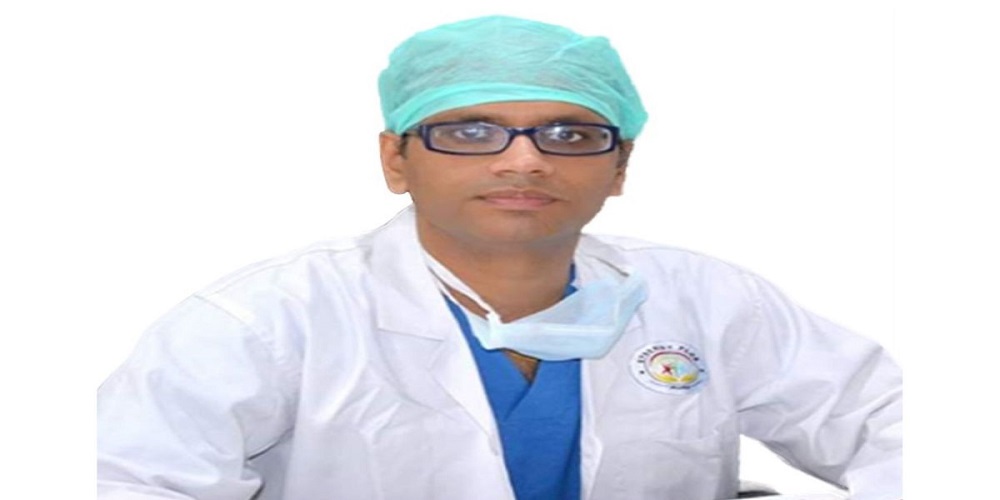Agra (India), June 20: Piles refer to the swollen and inflamed blood vessels located in the rectum and anus. It is caused by increased pressure on the veins in the lower rectum and anal region due to prolonged sitting or standing, chronic constipation, obesity, pregnancy, and straining during bowel movements.
The global disease burden of piles, also known as hemorrhoids, is significant and affecting a large portion of the population worldwide. While specific data on the prevalence of piles can vary across countries and regions, studies indicate that it impacts millions of individuals globally. Approximately 4.4% of the general population worldwide has symptomatic hemorrhoids. However, this percentage may be higher when considering undiagnosed or asymptomatic cases. Piles can occur in people of all ages, but they are more prevalent in adults, particularly those between the ages of 45 and 65. The condition is slightly more common in men than women. The overall disease burden of piles is influenced by several factors, including lifestyle habits, dietary patterns, and genetic predisposition.
The disease leads to various health complications and significantly impact individuals’ quality of life. Common symptoms include chronic pain, bleeding, itching, irritation in anal area, and difficulty in performing daily activities, including sitting and walking. In addition it can also have psychological effects like embarrassment, anxiety, and decreased self-confidence of an individual leading to social and emotional distress. The economic burden of piles is also noteworthy. The condition often requires medical consultations, diagnostic tests, and individuals may incur costs related to medications, surgical procedures, and follow-up care. Moreover, piles can lead to decreased work productivity, absenteeism, and impaired daily functioning, resulting in indirect costs to individuals and society as a whole.
Diagnosis is typically based on medical history, symptoms and digital rectal examination. Anoscopy / sigmoidoscopy may be performed to rule out other underlying conditions and determine the extent and severity of disease. However, fear of treatment, recurrence and embarrassment often results in delay in seeking consultation and worsening of symptoms
The treatment of piles depends on the severity of the condition and the individual’s overall health. In mild cases, self-care measures and lifestyle changes may suffice. These include increasing fibre intake, staying hydrated, avoiding excessive straining during bowel movements, and practicing good anal hygiene. Over-the-counter creams, ointments, and suppositories can provide temporary relief from itching and discomfort. For more persistent or severe cases, medical interventions may be necessary. These can include non-surgical treatments like rubber band ligation or injection sclerotherapy and surgical treatments like conventional hemorrhoidectomy, MIPH (stapled surgery) or LASER hemorrhoidopexy.
Laser surgery for piles, also known as laser hemorrhoidoplasty has seen advancements and refinements over the years. It was introduced as a minimally invasive alternative to conventional hemorrhoidectomy, which involved the removal of hemorrhoidal tissue using a scalpel. It involves using focused laser energy to coagulate and shrink the hemorrhoidal tissue, which reduces the blood supply to the hemorrhoids. The laser also seals the blood vessels, minimizing bleeding during and after the procedure. Over time, advances in laser technology led to the development of more precise and efficient lasers for surgical procedures. Currently, diode LASERS have been used for laser hemorrhoidoplasty.
Laser surgery for piles offers several potential advantages, including reduced post-operative pain, decreased bleeding, minimal tissue damage, shorter hospital stays, and faster recovery times. Laser hemorrhoidoplasty is generally considered a less painful option with a quicker recovery compared to traditional surgery. Additionally, it may be associated with fewer complications and a lower risk of recurrence compared to conventional surgery in some cases. As medical technology continues to advance, there may be ongoing refinements in laser surgical techniques for piles. These refinements could involve improvements in laser devices, surgical methods, and patient selection criteria.
It’s important to note that the specific approach and techniques used in laser surgery for piles may vary depending on the surgeon, the patient’s condition, and advancements in medical technology. Consulting with a qualified healthcare professional will provide the most up-to-date and accurate information regarding laser surgery for piles.
To conclude, the global disease burden of piles is significant. The condition can have physical, psychological, and economic implications for individuals and society. Raising awareness about the condition, promoting preventive measures, and providing accessible and effective treatment options may be necessary to reduce global disease burden. Encouraging healthy lifestyle practices, including maintaining a high-fibre diet, drinking adequate amount of water, regular exercise, and proper bowel habits, can help prevent the development or recurrence of piles. Additionally, individuals should refrain from excessive straining during bowel movements and take prompt action if constipation occurs. Timely medical intervention and surgery, when needed, can alleviate symptoms, improve quality of life, and prevent complications.

